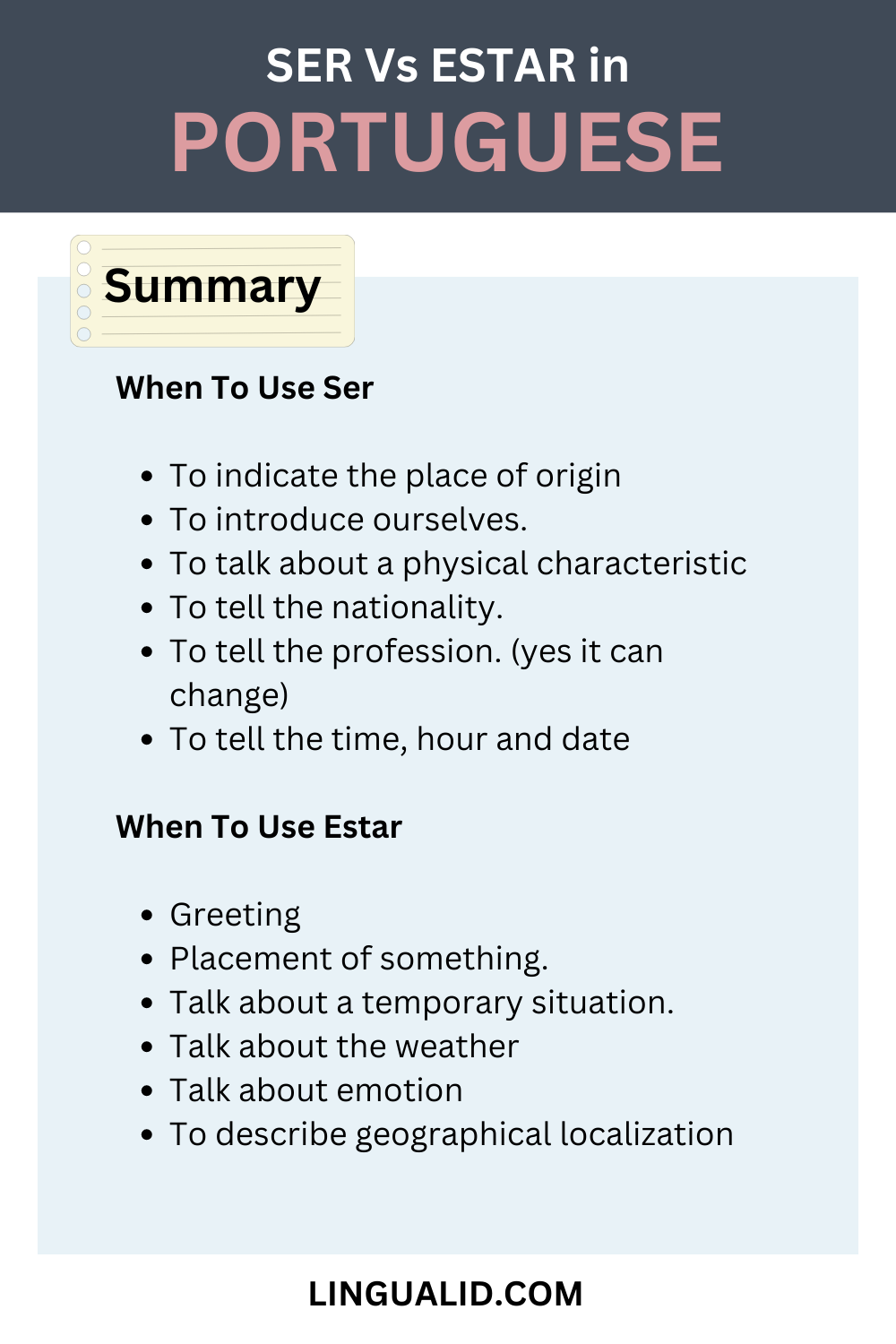In this lesson, we will talk about Ser and Estar in Portuguese, their conjugations and when to use each one of them.

We have two different verbs to express the English verb “to be” in Portuguese: Ser and Estar, each one has its own usage, before talking about it, let’s get their conjugation right first (present):
| Pronoun | Ser | Estar |
| Eu | Sou | Estou |
| Você | É | Está |
| Ele/ela | É | Está |
| A gente | É | Está |
| Nós | Somos | Estamos |
| Vocês | São | Estão |
| Eles/elas | São | Estão |
In general, the verb “Ser” is used for permanent (or long lasting) situations, while the verb “Estar” is used for more shorter situations.
I said in general because there are some exceptions that we will talk about later in this post.
My nationality for example is a permanent situation, so I would say “eu sou marroquino” (I’m Moroccan), being in my room, in the opposite, is a temporary situation, so I’d say “estou no meu quarto” (I’m in my room)
Good, now if you’d describe two people being short, an adult and a little kid, would you use the same verb? look:
This man is short – esse homem é baixo (probably permanent lol)
This kid is short – esse garoto esta baixo (he will grow up)
What about describing a girl being pretty, is it because of makeup and clothes or she’s been always pretty?
Beauty is that kind of situation that can’t change overnight, normally we say “ela é bonita”, saying “ela esta bonita” will make us understand that she’s not always pretty.
Note: you can practice what you’ve learned here, and learn how to pronounce each of the words in our Memrise course here, don’t know how to use the platform or sign up? we’ve got you covered in this easy-to-follow tutorial here.
When to use “ser” and “estar”
We use the verb “ser”:
- To indicate the place of origin
- To introduce ourselves.
- To talk about a physical characteristic
- To tell the nationality.
- To tell the profession. (yes it can change)
- To tell the time.
We use the verb “estar”:
- Greeting (como está?/how are you?)
- Placement of something.
- Talk about a temporary situation.
- Talk about the weather
- Talk about emotion
- To describe geographical localization

Happy learning!
